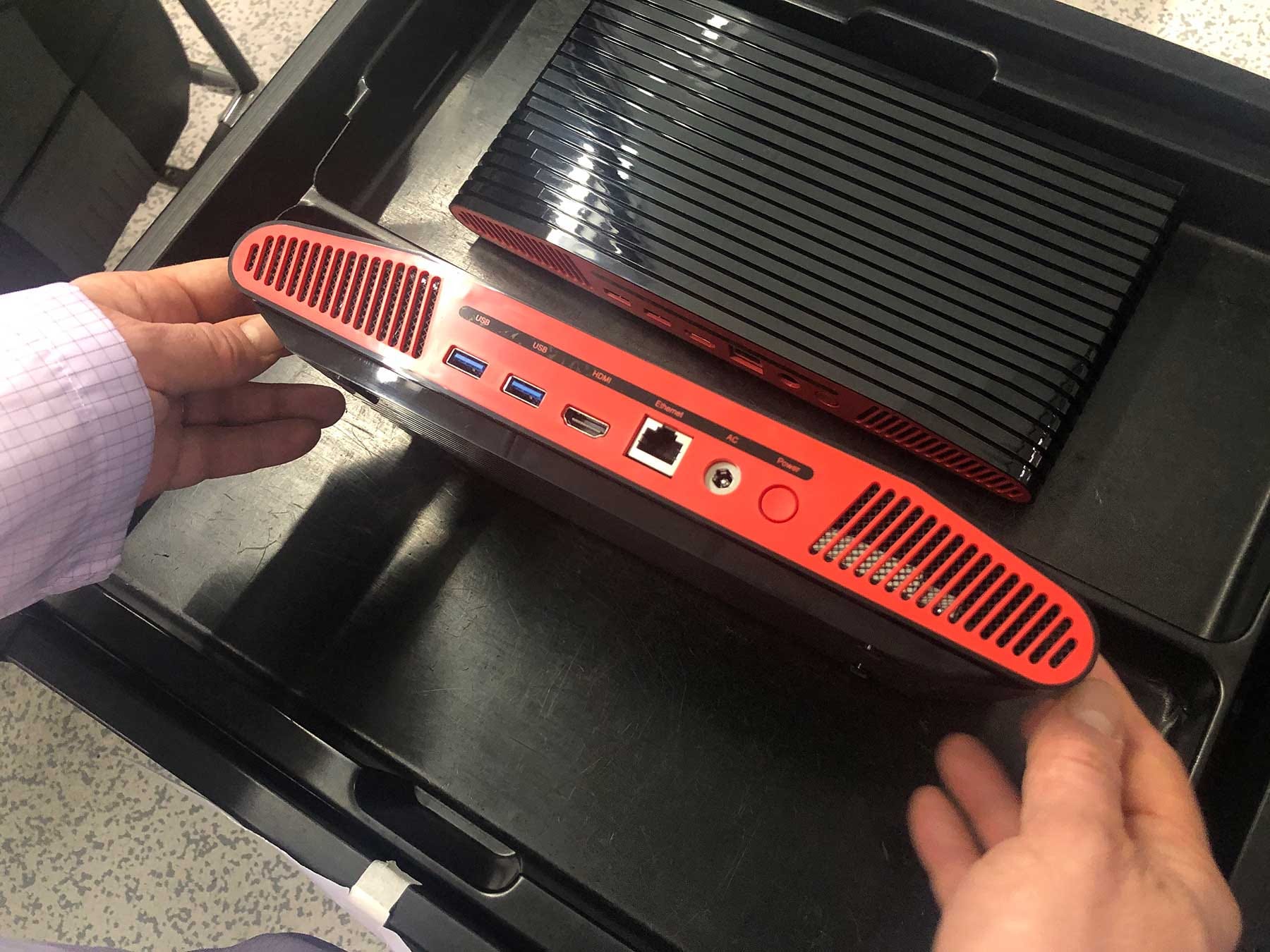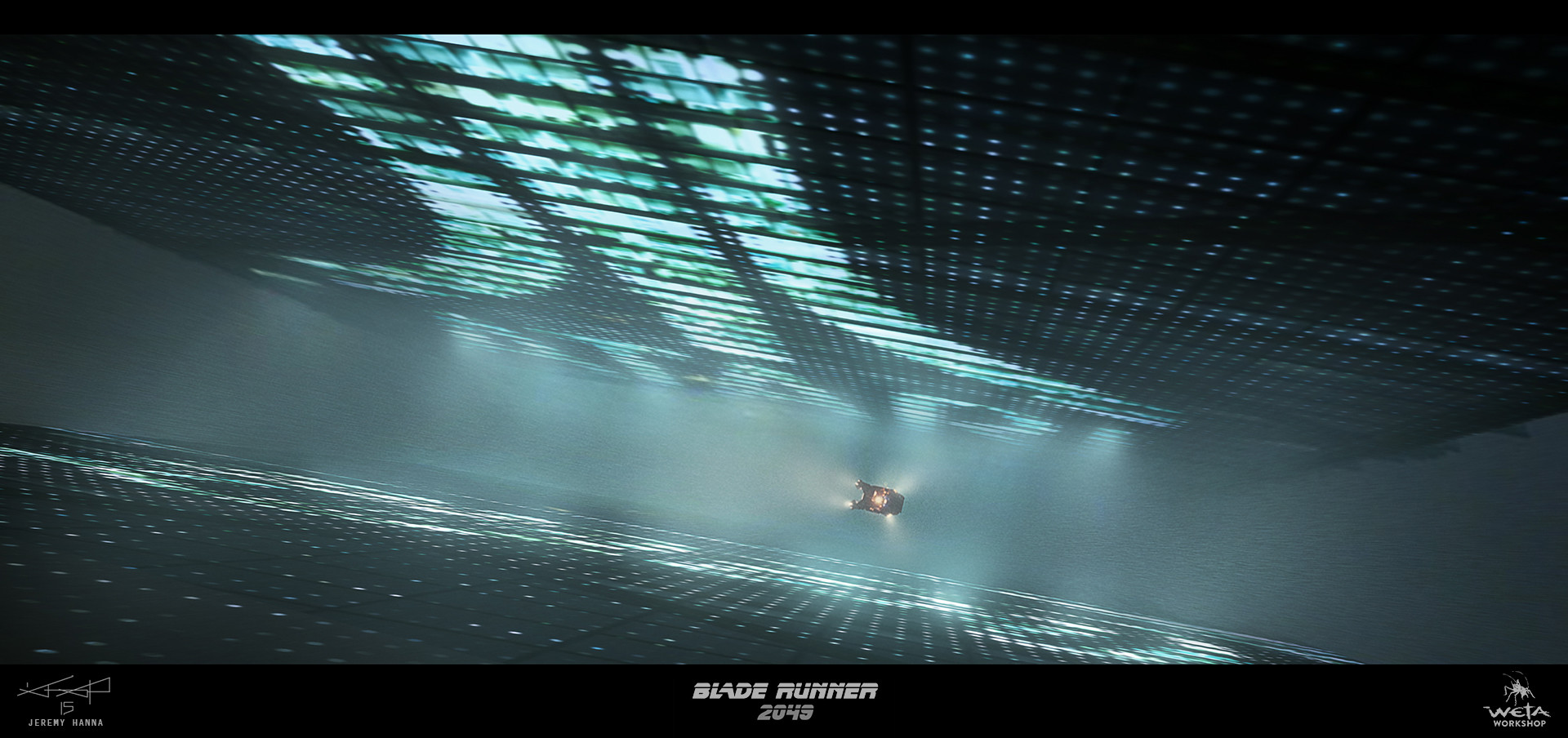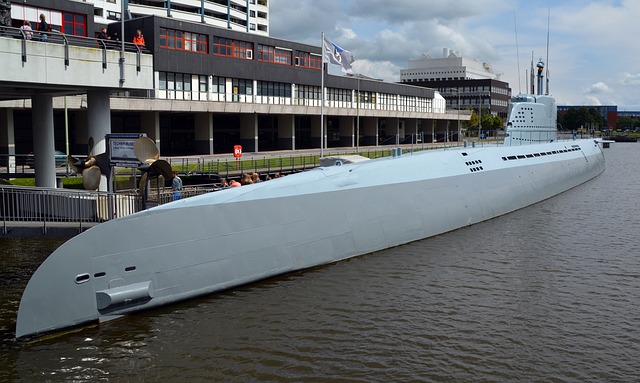
Answers to some of the most commonly asked questions about the Atari VCS.
The Atari VCS design and engineering teams just returned from extended trips to China, where they have been working with our manufacturing partners on final details in preparation for system and peripherals mass production.
In this Q&A, Atari VCS Chief Operating Officer Michael Arzt responds to a broad range of questions regarding the Atari VCS project, discusses the company’s vision for the product and Atari’s plans for the full-retail launch in 2020. As the team continues to prepare for the rapidly approaching mass production, this Q&A also provides additional follow-up to recent Atari VCS updates, letting backers, fans and future users know what to expect in the coming months.
Q: Atari originally planned to launch the VCS in late spring/early summer of 2019. In March of this year you announced that you would delay things and not ship the system until March 2020. What was behind the schedule change?
Michael Arzt: In March 2019, we decided to make some modifications to our hardware in order to improve the system’s performance and life span by upgrading the microprocessor to AMD Ryzen™, the latest generation of AMD chips. This important change was not made lightly and was based on feedback from the Atari VCS backer community, internal user research, device testing, and planned in close collaboration with our development partners.
The biggest change came as a result of work with our partners at AMD, when we were offered the opportunity to incorporate an all-new microprocessor built on a more powerful and more efficient architecture. The team is well-aware that the delay impacted our backers, but feels strongly that we made the right decision to improve the product’s performance.
Q: Where do you stand today with hardware manufacturing and software development?
MA: Regarding hardware, the VCS design and engineering development teams have been working closely with our manufacturing partners and suppliers over the past several months.
I am excited to be able to share some initial photos of the first Atari VCS pre-production units, fresh off the assembly line and on their way to the extensive testing processes. We are deep into the final stages of pre-production and heading toward mass production, which is the focus of our attention today.



All of the VCS hardware, including the controllers, are currently being tested for functionality and reliability, receiving final tweaks as needed. We are also in the final stages of software development and ramping up our efforts to onboard additional game and app developers.
In terms of software, our Atari VCS GUI and storefront is being developed in Unity and is almost complete. The Atari VCS is fully compatible with the Unity game engine, which powers almost 50 percent of the world’s games, and we are working closely with Unity to ensure that their large and talented developer community has the resources and support it needs to bring the best games and apps to the Atari VCS platform. We have several studios lined up for the VCS launch window and will have more to say about them and their titles when we are closer to retail launch.
Q: Do you anticipate any further changes to the scheduled launch date of March 2020? What about the Indiegogo backers?
Michael Arzt: Right now, the product is progressing according to the updated schedule of March 2020. Our team is committed to bringing a successful product to market that we can be proud of, and that our customers will treasure for many years to come. Atari will always prioritize delivering a high-quality product over a self-imposed deadline. That was true at the project’s start, it was true in March 2019, and it is true today.
Our Indiegogo backers are extremely important to us, and the entire team and I would like to thank our backers once again for their loyalty and continued support. I am sure they will understand our prioritization of delivering a quality product above all else.
When we adjusted our schedule in March 2019, we were aiming for year-end 2019 delivery goal for the Indiegogo backers. Today, given the work still to be done, including the final stages of our certification and testing cycles, we now realize we will need a few more weeks than anticipated. Our teams, factories, and supplier partners are all working incredibly hard to make it happen; but as we all know, the devil is in the details, and we can win or lose a few days during each remaining step and will update our Indiegogo backers as soon as we have a final date.
No matter what, we are talking weeks here, not months, and the Indiegogo backers remain our top priority. Backers will definitely receive their Atari VCS systems before the general public. We will also try to come up with some kind of bonus to reward our backers for their patience.
Q: Can you share your communication plans for the next few months?
Michael Arzt: That’s a good and important question. We always want our backers, fans and customers to know how much they matter to us, and we want them to remain informed.
We understand that all of our stakeholders would like to know where things stand every day and want immediate answers to their individual posts and messages. I respectfully ask them to please understand that, as a public company, we must follow specific protocols that are in place.
In addition, because we also must always consider the needs and wishes of our various partners, we do not always have full control over the pace or timing of our communications. We aim to make periodic updates to our community with complete transparency. If there was one thing I’d want people to always know, it’s that “no news is good news” where the Atari VCS is concerned!
Q: Let’s return to the redesign of the Atari VCS in March 2019. Why was it so important?
Michael Arzt: The first and most impactful improvement was the switch to the new AMD Ryzen™ Embedded R1000 SoC in order to support 4K 60fps HDR content. The all-new Ryzen APU is also faster, cooler, and more efficient, allowing the VCS to benefit from a simpler and more effective power architecture and thermal solution. The new processor includes built-in Ethernet, Native 4K video with modern HDCP, and a secure frame buffer that fully-supports DRM video. This upgrade will translate to better overall performance in a cooler and quieter machine.
We also announced some great changes to the industrial design of the Atari VCS, including a subtle rise to the base of the chassis that both looks better and allowed us to add front-facing USB 3.0 ports which makes them more accessible and therefore more useful to our users. Modifications were made to both the Modern Controller and Classic Joystick as well. These improvements came from rounds of internal testing that helped us identify more specific requirements for the products, allowing us to also incorporate feedback from backers who are most passionate about the project.
Q: There has been some vigorous debate in social media about the Atari VCS. What do you make of it?
Michael Arzt: The Atari brand generates a lot of passion. It is only natural that we will attract interest and speculation, especially in the quiet periods heading into a major product launch like this one. Building a complex product like the Atari VCS from scratch takes time and care, and with any gaming and video platform, content in particular involves extensive discussions and cooperation with third-party partners. As tempting as it might be, we can’t comment publicly on confidential partnerships and licensing discussions while they are in progress. As you can imagine, we are talking about some large brands that have rigorous confidentiality guidelines.
We are glad to be reaching a stage where we can slowly start revealing more details and answer open and new questions from our community.
Q: Will the Atari VCS have original games, native apps, or a browser experience?
Michael Arzt: All three. The Atari VCS will be a gateway to a mix of original games and native apps. The primary way to access games and services will be through the proprietary Atari VCS interface and app store. If a service is not available as an app on our platform at launch, it can still be accessed through the internet browser. Content will include classic, new, and indie games from both Atari and third-party developers, along with entertainment apps for streaming video content, including TV shows and movies.
We have several game studios lined up for the VCS launch window and will have more to say about them and their titles when we are closer to retail launch. Our compatibility with Unity obviously opens things up as well.
In addition, the exclusive Atari VCS Edition of the Antstream Arcade app will give Atari VCS users immediate access to a library of more than a thousand licensed retro games.
Q: One recent report claimed there will be no native apps at launch, and that all services such as Netflix will be accessible through a Chrome-style browser.
Michael Arzt: As I already mentioned, the primary way to access games and services will be through the proprietary Atari VCS interface and app store. For example, if a service such as Netflix is not available as an app on our platform at launch, it can still be accessed through the web browser and the Sandbox Mode really allows unlimited possibility to reach anything on the web.
We don’t expect the pre-launch version shipping to our Indiegogo backers to have a full complement of native third-party apps. There will be games to play and things to do, but the first big wave of apps isn’t likely to come before Q1 of next year as we build toward our full retail launch and see a ramp up of the installed base. Much of this is obviously dependent on the app development timelines and contributions of any developers looking to make their apps available on the Atari VCS.
Atari’s goal is to have the content providers that our community values the most be accessible via apps, and the team expects the volume of content available will grow over time as more Atari VCS units sell into the market and we expand our gaming and entertainment partnerships. Articles that suggest otherwise are inaccurate.
Q: What can you tell us about the custom UI?
Michael Arzt: The VCS is a flexible system designed for multi-peripheral input, including the new Classic Joystick, Modern Controller, and mouse-keyboard. We are hard at work on the UI, which is being developed in Unity and looks really awesome.
The version of the UI we shared with reporters at E3 was serviceable as a demo but was nowhere near the level of quality we have achieved now and will deliver at launch. We’ve made some dramatic improvements to the user experience, and I’m really happy with the team’s current direction and progress. Our goal has been to create a modern UI that “feels like Atari,” meets contemporary expectations and also works seamlessly with our new Classic Joystick and other peripherals.
Q: Has the advent of streaming services and subscriptions, like Stadia and Apple Arcade, affected your approach at all?
Michael Arzt: Actually, it has validated our approach. The Atari VCS was designed with digital delivery as part of the plan from conception. Digital delivery is the current and future state of the games and entertainment industry and how many customers increasingly prefer to discover and purchase new content.
When we made the decision to upgrade to the new AMD Ryzen™ Embedded R1000 SoC, we did so primarily because it enables the VCS to fully-support 4K 60fps HDR content from the ever-growing list of new streaming services. The Atari VCS is designed to be able to embrace any compatible game streaming platform, like Stadia and others still to come down the road.
We see the Atari VCS as a game machine that is also a flexible multi-purpose platform for the living room that will offer natively installed games and content, along with other entertainment options through a myriad of streaming services. Plus unmatched freedom via the Sandbox Mode.
Q: Will the OS and store be part of the Atari VCS when it ships to Indiegogo backers?
Michael Arzt: Yes. The Atari VCS Indiegogo units are going to ship with the Atari OS and integrated storefront. The VCS features an intuitive, easy to navigate graphical user interface, designed for joystick or controller, and an integrated store for games and apps, running on the proprietary Atari OS which is based on a Linux foundation.
In addition, the Atari VCS Sandbox mode — a unique feature not available on more traditional closed-off console ecosystems — will also let users install and boot to a second compatible operating system such as Linux, Windows and others. This open, flexible, multi-platform approach has drawn tremendous user interest and is part of what make our system unique. The VCS will allow you to play games, access all your streaming services, like Steam and other game libraries, all through one device.
The release of the Atari VCS to our Indiegogo backers is an opportunity to get early feedback from a heavily engaged and invested community of passionate users prior to our official launch. We promised backers involvement from the start and this is similar to a software pre-release, which is quite common in the tech and gaming industry.
We expect that early and ongoing user feedback will lead to software updates that improve the experience and functionality. “Early access” does not mean incomplete or unfinished; as with any game system, we look forward to engaging with the community to deliver the best possible Atari VCS experience.
Q: Stepping back, why did you elect to crowdsource the funding of the Atari VCS using Indiegogo?
Michael Arzt: Atari is fortunate to have a thriving business and a loyal community that loves our games and is passionate about the Atari brand. But would our community want a new, modern console from Atari? The Indiegogo platform and campaign allowed us to answer that question by offering a proof of concept and letting us see how the market would respond.
As widely-reported, the first-day response to the Atari VCS crowdfunding campaign in May 2018 ended up crashing the Indiegogo site. That initial response was truly incredible — not only did we get the support of more than 11,000 individual backers; we were able to sign major retailers and enter discussions with a host of partners. We decided to close our active Indiegogo campaign after 30 days when we hit the $3 million mark so we could focus on product development.
We can’t thank our community enough for its support and enthusiasm. We’re incredibly excited about our progress over the past year and can’t wait to share the fruits of our work. As I’ve said before, we are all huge fans ourselves and know that Atari means a lot to our passionate community, and we are looking forward to making this product something they will use and love for years to come!
We hope you enjoyed this Q&A with Atari VCS COO Michael Arzt!
The Atari VCS team is busy with its ongoing efforts and excited to continue to share the latest progress. Please watch for our next update — coming very soon — with more production information, factory photos and updates from the team’s most recent trips to China.
Have a very Happy Thanksgiving holiday in the USA and a great weekend around the world!
— The Atari VCS Team
source:https://medium.com/@atarivcs/atari-vcs-q-a-with-coo-michael-arzt-645c1a6d3e0




Leave a Comment